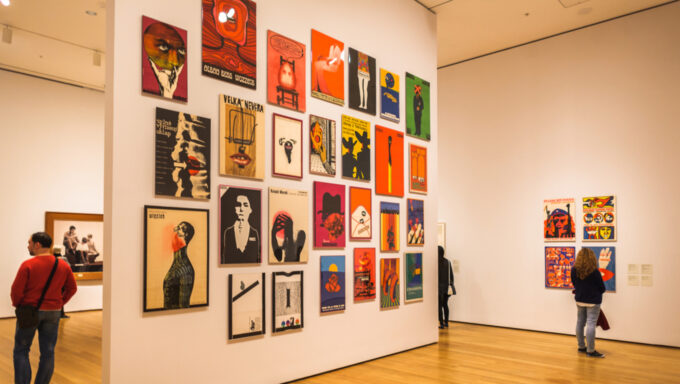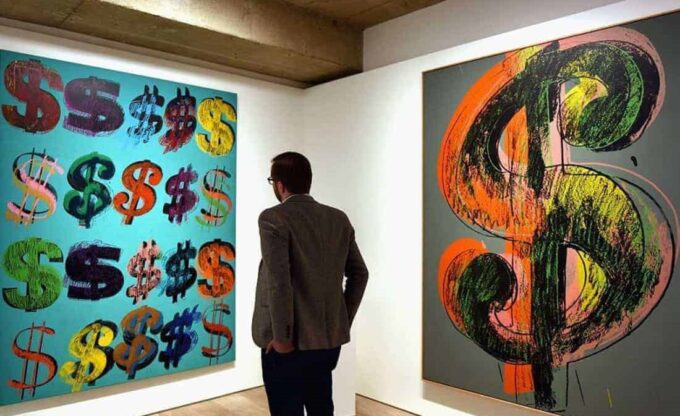These days, many people locked at home are trying to invest in various asset classes. Some put their savings in jewels, while others prefer to invest in rare coins. Art and antiques are also quickly gaining popularity as a profitable investment. For example, according to russianicon.com, the value of antique religious icons is increasing with each passing year, not to mention high-quality fine art by both contemporary artists and masters of the past. Moreover, such pieces not only can bring you some profit if you choose to invest in them but also can greatly enhance your home décor and create a cozy atmosphere in your place.
Anyway, whether you want to purchase fine art to decorate your living space or start your own art collection, it is extremely important to educate yourself and learn more about art as a long-term investment. Here you have some useful information that will help you make smart decisions to protect your money.
Types of art

Art spans a wide variety of styles, classifications, and media, and you should explore all of them before investing in anything.
- Original artworks
Original artworks are unique art pieces that exist in a single copy. These may include photographs, sculptures, drawings, paintings, prints, and even video art. It is needless to say that original works are the most valuable and appropriate for collecting and investment goals. The rarer the piece, the higher its price.
- Prints
Fine art prints are also art pieces of high value, even though they are copies. They rival original artworks in their clarity, quality, a wide variety of techniques, and visual impact. Investing in prints is a good option for new art collectors, especially those with limited funds. However, you need to be extremely careful when dealing with this type of art, as not all art prints appreciate in value.
- Gicleés
Gicleés are the highest-quality prints produced mechanically with the help of massive inkjet printers. Some of these prints even have a certificate of authenticity and are classified as “museum quality.” Their comparable superiority to other types of art prints makes gicleés highly valuable on the market. However, they are still just copies of original artworks.
- Reproductions
Reproductions or posters are another type of art copies. They are not limited in number, which means two things: they are a good choice to decorate your home if you are on a budget, but they are not something you want to invest in.
Tips on how to buy works of art

- Research an artist
The story lying behind the artwork and its author makes the piece more interesting and often more valuable. Start your search by learning more about the artist, including their education, awards, and background. A good choice is to check the gallery featuring works by this artist. You can find a lot of useful information there. You may also try to surf the Net for a more in-depth understanding of the artist and their work. Check auction results to determine current market values. Previous exhibitions at the museums and reputable art galleries add value to the artist and their art as well.
- Research an artwork
You need to do your best to fully understand an artwork before you buy it for your collection. The question of its authenticity is of paramount importance. It may be relatively easy to prove it if the artist is still alive. However, it can be problematic if not. Therefore, you need to get a certificate of authenticity from an expert to protect yourself. The next step is obtaining a thorough appraisal. Always keep in mind that such fragile items as art pieces may be damaged or broken in transit or during their storage. This considerably affects their value. The cost of a good appraisal may vary depending on the piece, the expertise of the appraiser, the period, and many other factors.
- Investigate a dealer
Whether you are going to buy art at a specialized store or an art auction, the reputation of the source really matters. The problem is that when it comes to investigating dealers and brokers, the confidentiality of the art market can make it almost impossible, so you should do your best to find as much information as possible. Buying art at galleries is usually much easier. If the gallery is not new to the field of art, you will find useful information about it without too much hassle.
Where to buy art?

The choice of where to buy art is as important as the choice of the artwork itself. Below you will find several most popular options for art collectors wishing to invest in fine art.
- Auctions
Actions are exciting places but do not allow them to catch you up in the moment. Suggest the price only if it is justified. It is always worth weighing the value, condition, and price of an item. It is even more important to weigh all those factors twice before buying the piece.
- Galleries
Galleries offer a more relaxed environment to purchase art as compared to auctions. Some galleries tend to focus on emerging artists, others focus on the secondary market, so you have plenty of options to choose from. Most art galleries also provide art advisory and appraisal services and can help you make the right investment.
- Art fairs
Many investors prefer to buy fine art at national and international art fairs. An art fair is an ideal place to mingle with other art lovers, compare prices, learn about investment-worthy artists, and ask art experts questions. No matter your preferences and level of proficiency, you are likely to find something suitable for your needs and budget.
- Online
Buying artworks on the Internet has a myriad of benefits these days, especially in times of the coronavirus pandemic. View gallery and auction houses websites, do online research, and network with other art collectors to find the best places for online shopping. Be sure to learn more about the artwork, the artist, and the seller before clicking the “buy” button.
High-quality art is a good investment if you know what to buy and how to buy it. However, it is also important to buy what you really love. This will make your collection more meaningful and help you get profit from it one day.









